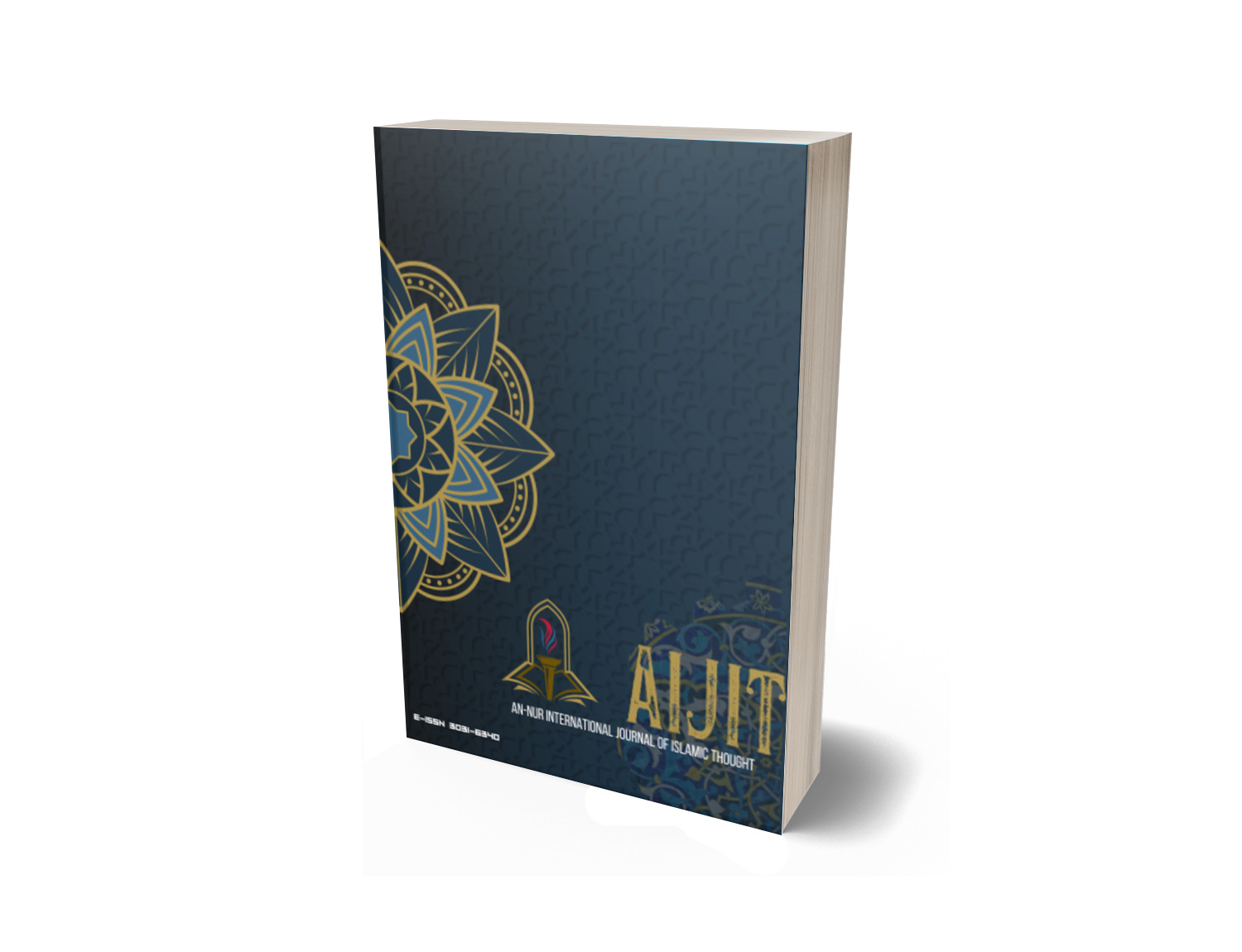Contesting the Esoteric Label of Sufism through Reformism and Orientalism
Keywords:
Sufism, esotericism, Orientalism, Islamic reformism, mysticismAbstract
This article explores how Sufism came to be commonly identified as Islamic esotericism within academic discourse and broader cultural understandings. Drawing upon theoretical contributions from Wouter Hanegraaff and Kocku von Stuckrad, the study analyzes how Western intellectual movements—such as Orientalism, Romanticism, and Transcendentalism—framed Sufism through esoteric and mystical lenses, often severed from its Islamic roots. It also investigates how Islamic reformers like al-Afghānī, ʻAbduh, and Riḍā critiqued Sufism as irrational, superstitious, or obstructive to progress, paralleling Protestant criticisms of Christian mysticism. Methodologically, the study integrates discourse analysis, historical hermeneutics, and comparative textual analysis to trace the evolution of these narratives. Results show that classical Sufi orders such as the Naqshbandiyyah and Mevleviyya employed esoteric rhetoric without necessarily opposing orthodoxy. In modern contexts, Sufi expressions vary widely—from inward mystical cultivation (e.g., Naqshbandi-Haqqani) to outward political activism (e.g., Naqshbandi Army). These developments highlight Sufism’s role in contesting extremist ideologies and adapting to urban modernity. The article concludes that identifying Sufism solely as Islamic esotericism obscures its internal diversity and historical significance. Rather than treating it as a fixed category, scholars should engage with Sufism as a dynamic tradition deeply embedded in Islamic thought and practice, shaped by internal theological debates and external cultural forces.
Downloads
References
Abshor, U. (2019). Peran Sufisme Dalam Mengatasi Paham Islam Radikal Di Indonesia. Al-Banjari Jurnal Ilmiah Ilmu-Ilmu Keislaman, 18(1), 153. https://doi.org/10.18592/al-banjari.v18i1.2540
Abu Quba, A., & Al Qatawna, M. (2023). A Discourse Analysis of Surah Al-Duha in the Holy Quran: Implications for Contemporary Discourse. World Journal of English Language, 14(2), 36. https://doi.org/10.5430/wjel.v14n2p36
Acim, R. (2022). The Sufi and the Transcendentalist: An Encounter of Dialogue, Love and Sublimity. Comparative Literature: East & West, 6(2), 117–129. https://doi.org/10.1080/25723618.2022.2102105
Ahmad, M., Aziz, A., Afad, M. N., Muniroh, S. M., & Qodim, H. (2021). The Sufi order against religious radicalism in Indonesia. HTS Teologiese Studies / Theological Studies, 77(4), 1–11. https://doi.org/10.4102/hts.v77i4.6417
Amir Ramazanovich, N. (2023). Tavassul, Istigasa and Rabita as Elements of Sufi Ritual Practice in the Context of Criticism by Dagestani Enlightenment Reformers of the First Third of the 20th Century. Islamovedenie, 14(1), 5–16. https://doi.org/10.21779/2077-8155-2023-14-1-5-16
Anam, H. F., & Ghozali, M. (2022). The Concept of Religious Tolerance in Reconstruction and Reinterpretation of Al-Kafirun by Mun’im Sirry (Critical Discourse Analysis of Teun A. Van Dijk). JURNAL INDO-ISLAMIKA, 12(1), 69–87. https://doi.org/10.15408/jii.v12i1.26502
Arifin, A. Z. (2019). From Magics, Dances, to Cafés: The Role of Sufism in Constructing Identity Among the Urban Youth. https://doi.org/10.2991/aicosh-19.2019.35
Asghari, S. A. H. (2021). Replacing Sharīʿa, Ṭarīqa and Ḥaqīqa with Fiqh, Akhlāq and Tawḥīd. Journal of Sufi Studies, 9(2), 202–214. https://doi.org/10.1163/22105956-bja10010
Birge, J. K. (1965). The Bektashi Order of Dervishes. Luzac Oriental.
Cook, D. (2015). Mysticism in Sufi Islam. In Oxford Research Encyclopedia of Religion. Oxford University Press. https://doi.org/10.1093/acrefore/9780199340378.013.51
Elnesil, A. H. (2023). A Critical Discourse Analysis of King Khalid University Students’ Translation of Untranslatability in Islamic Religious Texts. International Journal of Linguistics, Literature and Translation, 6(9), 72–85. https://doi.org/10.32996/ijllt.2023.6.9.8
Feldman, D. (2022). Reading Poison: Science and Story in Nazi Children’s Propaganda. Children’s Literature in Education, 53(2), 199–220. https://doi.org/10.1007/s10583-021-09454-9
Fitriana, M., & Ahmad, J. (2022). Spiritual Well-Being, Intra-Familial Relations, and Mental Health During the COVID-19 Pandemic in Malaysia: A Framework Analysis. 818–831. https://doi.org/10.2991/978-2-494069-65-7_65
Greeley, J.-A. (2022). Sufi turning and the spirituality of sacred space. Journal for the Study of Spirituality, 12(2), 108–119. https://doi.org/10.1080/20440243.2022.2126138
Hamzah, S., Abdullah, Usman, U., & Kurais. (2024). SEJARAH INTELEKTUAL ISLAM: KONTRIBUSI DAN PENGARUH PEMIKIRAN Al-Ghazali TERHADAP DUNIA ISLAM ABAD KE 11 M. Batuthah, 3(2), 115–130. https://doi.org/10.38073/batuthah.v3i2.1785
Hamzeh, A. N., & Dekmejian, R. H. (1996). A Sufi Response to Political Islamism: Al-Aḥbāsh of Lebanon. International Journal of Middle East Studies, 28(2), 217–229. https://doi.org/10.1017/S0020743800063145
Hanegraaff, W. J. (2013). The power of ideas: esotericism, historicism, and the limits of discourse. Religion, 43(2), 252–273. https://doi.org/10.1080/0048721X.2013.767607
Hasyim, F., Ningrum, N. S., & Lukito, R. (2024). From East to West: Carl W. Ernst’s Insight Into Sufism’s Impact on Islamic Studies in America. Ijish (International Journal of Islamic Studies and Humanities), 7(1), 20–44. https://doi.org/10.26555/ijish.v7i1.9948
Hatina, M. (2022). Turning to the East, Rescuing the West: Sufism and Humanism in Ivan Aguéli’s Thought. Islam and Christian–Muslim Relations, 33(1), 67–89. https://doi.org/10.1080/09596410.2021.1989815
Howell, J. D. (2001). Sufism and the Indonesian Islamic Revival. The Journal of Asian Studies, 60(3), 701–729. https://doi.org/10.2307/2700107
Ibn al-ʻArabī, M. al-D. M. (2024). Fuṣūṣ al-Ḥikam wa khuṣūṣ al-Kalim. Brill.
Kalābādhī, M. ibn I. (2021). Kitāb al-taʻarruf li-madhhab ahl al-taṣawwuf. Dār Nīnawá lil-Dirāsāt wa-al-Nashr wa-al-Tawzīʻ.
Khalil, A., & Sheikh, S. (2014). Editorial Introduction. Studies in Religion/Sciences Religieuses, 43(3), 355–370. https://doi.org/10.1177/0008429814538226
Khanom, R. (2024). Romanticizing Sufism: Tracing Spiritual Echoes of the Divine between Sufism and Romanticism. BL College Journal, 6(1), 142–152. https://doi.org/10.62106/blc2024v6i1e3
Mahmoud, R. (2024). The Origin of Esotericism: An Analysis of the Ismaili Esoteric Approach to Qur’anic Interpretation. Jurnal Studi Ilmu-Ilmu Al-Qur’an Dan Hadis, 25(1), 105–120. https://doi.org/10.14421/qh.v25i1.5392
Makhasin, L. (2016). Urban Sufism, Media and Religious Change in Indonesia. Ijtimā Iyya Journal of Muslim Society Research, 1(1), 23–36. https://doi.org/10.24090/jmsr.v1i1.2016.pp23-36
Manzoor, S., Shah, N. A., & Manzoor, A. (2020). Sufism as a Global Highway to Peace. Iḥyāʾalʿulūm - Journal of Department of Quran O Sunnah, 19. https://doi.org/10.46568/ihya.v19i.24
Moyaert, M. (2017). Ricoeur and the Wager of Interreligious Ritual Participation. International Journal of Philosophy and Theology, 78(3), 173–199. https://doi.org/10.1080/21692327.2017.1312491
Muhammad, A., & Rashid, R. (1935). Tafsir al-Manar. al-manar.
Muttaqin, A., Hamsah, U., & Abror, R. H. (2023). Muhammadiyah, Sufism, and the quest for ‘authentic’ Islamic spirituality. Indonesian Journal of Islam and Muslim Societies, 13(1), 199–226. https://doi.org/10.18326/ijims.v13i1.199-226
Otto, B.-C. (2013). Discourse theory trumps discourse theory: Wouter Hanegraaff’s Esotericism and the Academy. Religion, 43(2), 231–240. https://doi.org/10.1080/0048721X.2013.767610
Pasi, M. (2013). The problems of rejected knowledge: thoughts on Wouter Hanegraaff’s Esotericism and the Academy. Religion, 43(2), 201–212. https://doi.org/10.1080/0048721X.2013.767611
Pearson, H. O. (2021). Islam Reformed in Indian History: The Dynamic Sufi Heart in Vital Transition to Printed Scripture. Teosofi: Jurnal Tasawuf Dan Pemikiran Islam, 11(1), 71–92. https://doi.org/10.15642/teosofi.2021.11.1.71-92
Picken, G. N. (2011). The Quest for Orthodoxy and Tradition in Islam: Ḥanbalī Responses to Sufism. https://doi.org/10.5040/9780755622702.ch-0010
Pruss, M.-M. (2023). The ‘Church of Islam’: esotericism, Orientalism, and religious origin myths in colonial South Asia. Journal of the Royal Asiatic Society, 33(1), 229–252. https://doi.org/10.1017/S1356186322000050
Riyadi, A. K., & Mudin, M. I. (2020). The Critique of Sufism in Ahmad Amin’s Social Theory. TSAQAFAH, 16(2). https://doi.org/10.21111/tsaqafah.v16i2.5079
Rozi, A. F., Nurwahidin, & Mulawarman Hannase. (2024). Dinamika Transformasi Tasawuf Era Modern: Neo-Sufisme dan Gerakan Islam Transnasional. Tasamuh: Jurnal Studi Islam, 16(2), 278–297. https://doi.org/10.47945/tasamuh.v16i2.1393
Rozi, F. (2020). Ibnu Athaillah dan Penafsiran Esoteric. PUTIH: Jurnal Pengetahuan Tentang Ilmu Dan Hikmah, 6(2), 47–58. https://doi.org/10.51498/putih.v6i2.76
Ruggiero, M. (2020). Occult Influences on Luigi Capuana and Luigi Pirandello. Књижевна Историја, 52(172), 87–102. https://doi.org/10.18485/kis.2020.52.172.6
Rūmī, J. al-D. (2021). Mathnawî (NV-1 onl). Metropolitan Municipalité de Konya.
Saif, L. (2024). The Past and Future of the Study of Islamic Esotericism. Religion Compass, 18(7). https://doi.org/10.1111/rec3.12494
Shikhaliev, S. (2022). Discussion of Sufism in Dagestan in the Historical Retrospective. History, Archeology and Ethnography of the Caucasus. https://doi.org/10.32653/ch182323-345
Sorgenfrei, S. (2018). Hidden or Forbidden, Elected or Rejected: Sufism as ‘Islamic Esotericism’? Islam and Christian–Muslim Relations, 29(2), 145–165. https://doi.org/10.1080/09596410.2018.1437945
Stausberg, M. (2013). What is it all about? Some reflections on Wouter Hanegraaff’s Esotericism and the Academy. Religion, 43(2), 219–230. https://doi.org/10.1080/0048721X.2013.767612
Stuckrad, K. v. (2008). Esoteric Discourse and the European History of Religion: In Search of a New Interpretational Framework. Scripta Instituti Donneriani Aboensis, 20, 217–236. https://doi.org/10.30674/scripta.67337
Sufism in the United States. (2021). https://doi.org/10.1093/obo/9780195390155-0282
Szőnyi, G. E. (2023). The Study of Western Esotericism in East-Central Europe—With a Focus on the Last Decades. Aries, 23(1), 1–22. https://doi.org/10.1163/15700593-02301001
Tabandeh, R. (2021). The Rise of the Ni‘matullāhī Order. Shi’ite Sufi Masters Against Islamic Fundamentalism in 19th-Century Persia. https://doi.org/10.24415/9789087283674
von Stuckrad, K. (2005). Western esotericism: Towards an integrative model of interpretation. Religion, 35(2), 78–97. https://doi.org/10.1016/j.religion.2005.07.002
Weismann, I. (2011). Modernity from Within: Islamic Fundamentalism and Sufism. Islm, 86(1), 142–170. https://doi.org/10.1515/islam.2011.018
Zarrabi-Zadeh, S. (2024). Preface to the Special Issue “Sufism in the Modern World.” Religions, 15(5), 554. https://doi.org/10.3390/rel15050554
Zazmanzadeh, N. (2012). Persian Myth and the Sufi Mystic. Technoetic Arts, 10(1), 47–51. https://doi.org/10.1386/tear.10.1.47_1
Published
Issue
Section
License
Copyright (c) 2024 Mahda Syarifah, Yustira Nurfadilah

This work is licensed under a Creative Commons Attribution-ShareAlike 4.0 International License.










